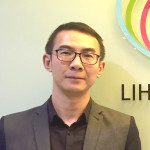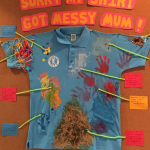In China, rehabilitation health care began to become available in the 1980s, following rapid economic reforms. In the beginning, a few hospitals and sanatoriums were chosen for trial provision of rehabilitative care in 1982. By1987, the Ministry of Health required all Tier II & III (top level in China) hospitals to have a rehab department. In the 1990s, a few more governmental policies continued to emphasize the importance of rehab and equal support was given to the development of rehab as to other major health care professions, for example, internal medicine and surgery. During the same period of time, a licensure system for rehabilitation therapists was established. The system divides the qualification into three levels, including assistant (for those with a secondary education background), therapist, and senior therapist. Prospective candidates may apply to take the licensure exam after two years of practice and progress to a higher level gradually.
Currently there are about 400 educational programs for therapists in China, at both Bachelor’s and post-graduate levels. However, only 10 programs train separate therapists specifically in physical and occupational therapy (PT/OT), the rest train “general therapists,” which means the curriculum is a combination of physical, occupational, and speech therapies, and the graduates are expected to work in all three areas. Under this educational Rather, the qualification is a general license for all rehabilitation therapists and the examination content is very PT orientated with a focus on physical modalities.
After years of endeavor, separate license systems for each profession are under development and hopefully will be in place in 2017. The current plan is to have specific licenses for PT, OT, and Pediatric Therapist. The Chinese Association of Rehabilitation (CARM) is leading the project, and the pediatric therapist license has the most development; it is suggested that applicants have 6 months of web-based and classroom-based pediatric therapy training before taking the license exam. This additional training is in addition to general rehabilitation education programs, which may provide insufficient training for therapists to gain the knowledge needed to pass the license exam. Although it is a specific license, the Pediatric Therapist license will remain a combination of occupational and physical therapies.
LIH is involved in all aspects of the establishment of Pediatric Therapy licensure and the associated training, including supporting curriculum development, creating teaching materials, establishing an online learning platform and face to face classroom delivery. The cooperation between LIH and CARM will continue to evolve over the coming year and with our successful contribution to the establishment of the Pediatric Therapy license, LIH will very likel participate in the future development of licenses specific to physical and occupational therapy.



















